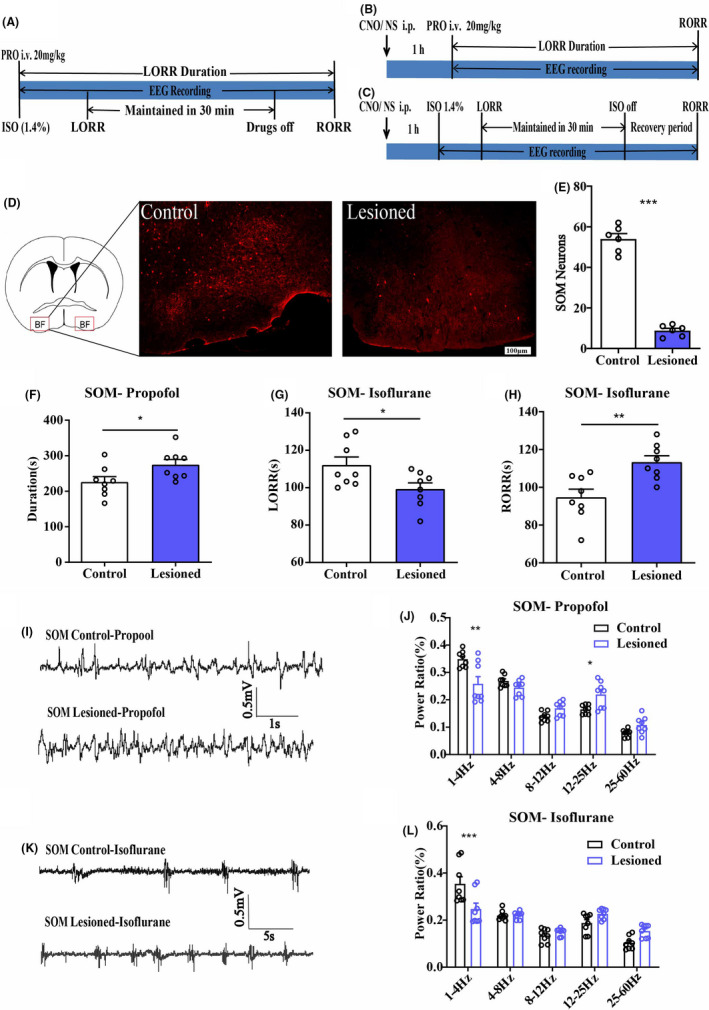FIGURE 1.

A, The behavioral and EEG recording experiment procedure diagram of neuron lesioned group. B, The behavioral and EEG recording experiment procedure diagram of hM3Dq and hM4Di group under propofol anesthesia. C, The behavioral and EEG recording experiment procedure diagram of hM3Dq and hM4Di group under isoflurane anesthesia. D, The diagram of injection sites (showing by the red boxes) of AAV‐CAG‐DIO‐DTA virus or saline in BF. And immunoflurescence of BF GABASOM neurons in control (left) and lesioned mice (right), scale bar: 100 μm. E, Mean numbers of BF GABASOM neurons in control and lesioned mice (54.00 ± 2.6 to 8.83 ± 2.88). F, The duration time of propofol anesthesia in BF GABASOM neuron lesioned group, n = 8, p < 0.05, unpaired t‐test. G, H, The LORR (G) and RORR (H) time of isoflurane in BF GABASOM neuron lesioned group, n = 8, *p < 0.05, **p < 0.01, unpaired t‐test. I, Representative EEG traces under propofol anesthesia in BF GABASOM neuron lesioned and control mice. J, The power spectrum analysis of EEG recording in single dose propofol anesthesia of BF GABASOM neuron lesioned group, n = 8, *p < 0.05, **p < 0.01, two‐way ANOVA. K, Representative EEG traces under isoflurane anesthesia in BF GABASOM neuron lesioned and control mice. L, The power spectrum analysis of EEG recording under 30 min isoflurane anesthesia in BF GABASOM neuron lesioned group, n = 8, **p < 0.01, ***p < 0.001, two‐way ANOVA. All graphs show mean ± SEM
